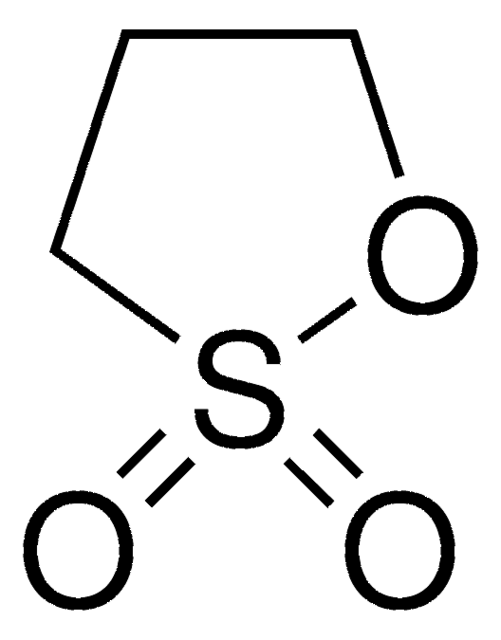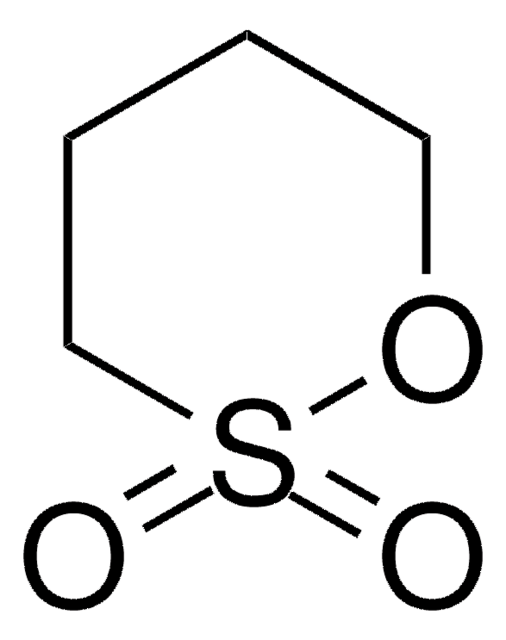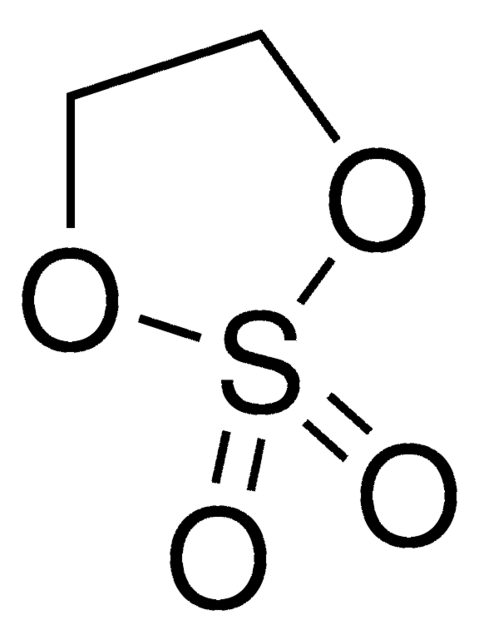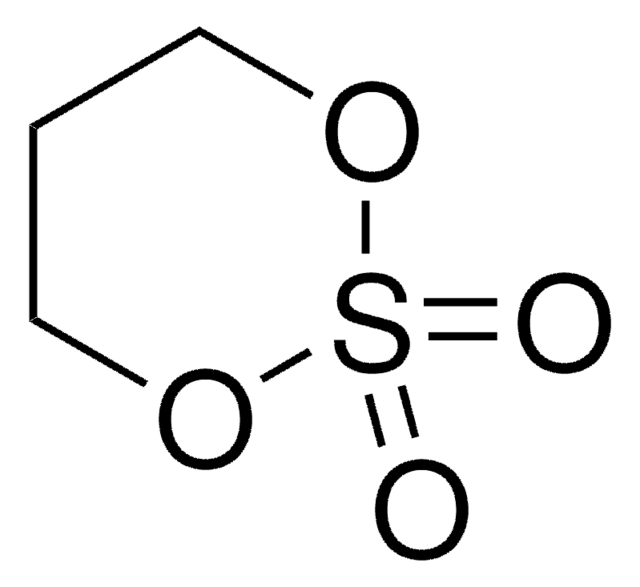Kluczowe dokumenty
901588
1,3-Propanesultone solution
1 M in THF
Synonim(y):
2,2-ditlenek 1,2-oksatiolanu, γ-sulton kwasu 3-hydroksypropanosulfonowego
About This Item
Polecane produkty
Formularz
liquid
stężenie
1 M in THF
współczynnik refrakcji
n/D 1.4144
gęstość
0.9266 g/mL
InChI
1S/C3H6O3S/c4-7(5)3-1-2-6-7/h1-3H2
Klucz InChI
FSSPGSAQUIYDCN-UHFFFAOYSA-N
Zastosowanie
- otrzymywanie poli[2-etynylo-N-(propylosulfonianu)pirydyniowej betainy], nowego sprzężonego polimeru jonowego[1]
- otrzymywanie nowego katalizatora w postaci kwaśnej cieczy jonowej na bazie poli(4-winylopirydyny)[2]
- otrzymywanie mezoporowatych nanocząstek krzemionki pokrytych poli((2-(dimetyloamino)etylometakrylanem)-co-3-dimetylo(metakryloiloksyetylo)amoniowym propanosulfonianem)[3]
- sulfonowanie powierzchni samoorganizujących się nanoporowatych koloidalnych warstw krystalicznych krzemionki składających się ze sfer krzemionkowych o średnicy 184 nm[4]
produkt powiązany
Hasło ostrzegawcze
Danger
Zwroty wskazujące rodzaj zagrożenia
Zwroty wskazujące środki ostrożności
Klasyfikacja zagrożeń
Acute Tox. 4 Oral - Carc. 1B - Eye Dam. 1 - Flam. Liq. 2 - Skin Irrit. 2 - STOT SE 3
Organy docelowe
Central nervous system, Respiratory system
Zagrożenia dodatkowe
Kod klasy składowania
3 - Flammable liquids
Klasa zagrożenia wodnego (WGK)
WGK 3
Temperatura zapłonu (°F)
-2.0 °F
Temperatura zapłonu (°C)
-18.88 °C
Wykazy regulacyjne
Wykazy regulacyjne dotyczą głównie produktów chemicznych. Można w nich podawać ograniczoną liczbę informacji na temat produktów niechemicznych. Brak wpisu oznacza, że żaden ze składników nie znajduje się w wykazie. Użytkownik odpowiada za zagwarantowanie bezpiecznego i zgodnego z prawem stosowania produktu.
EU REACH SVHC Candidate List
EU REACH Annex XVII (Restriction List)
Wybierz jedną z najnowszych wersji:
Certyfikaty analizy (CoA)
Nie widzisz odpowiedniej wersji?
Jeśli potrzebujesz konkretnej wersji, możesz wyszukać konkretny certyfikat według numeru partii lub serii.
Masz już ten produkt?
Dokumenty związane z niedawno zakupionymi produktami zostały zamieszczone w Bibliotece dokumentów.
Active Filters
Nasz zespół naukowców ma doświadczenie we wszystkich obszarach badań, w tym w naukach przyrodniczych, materiałoznawstwie, syntezie chemicznej, chromatografii, analityce i wielu innych dziedzinach.
Skontaktuj się z zespołem ds. pomocy technicznej










